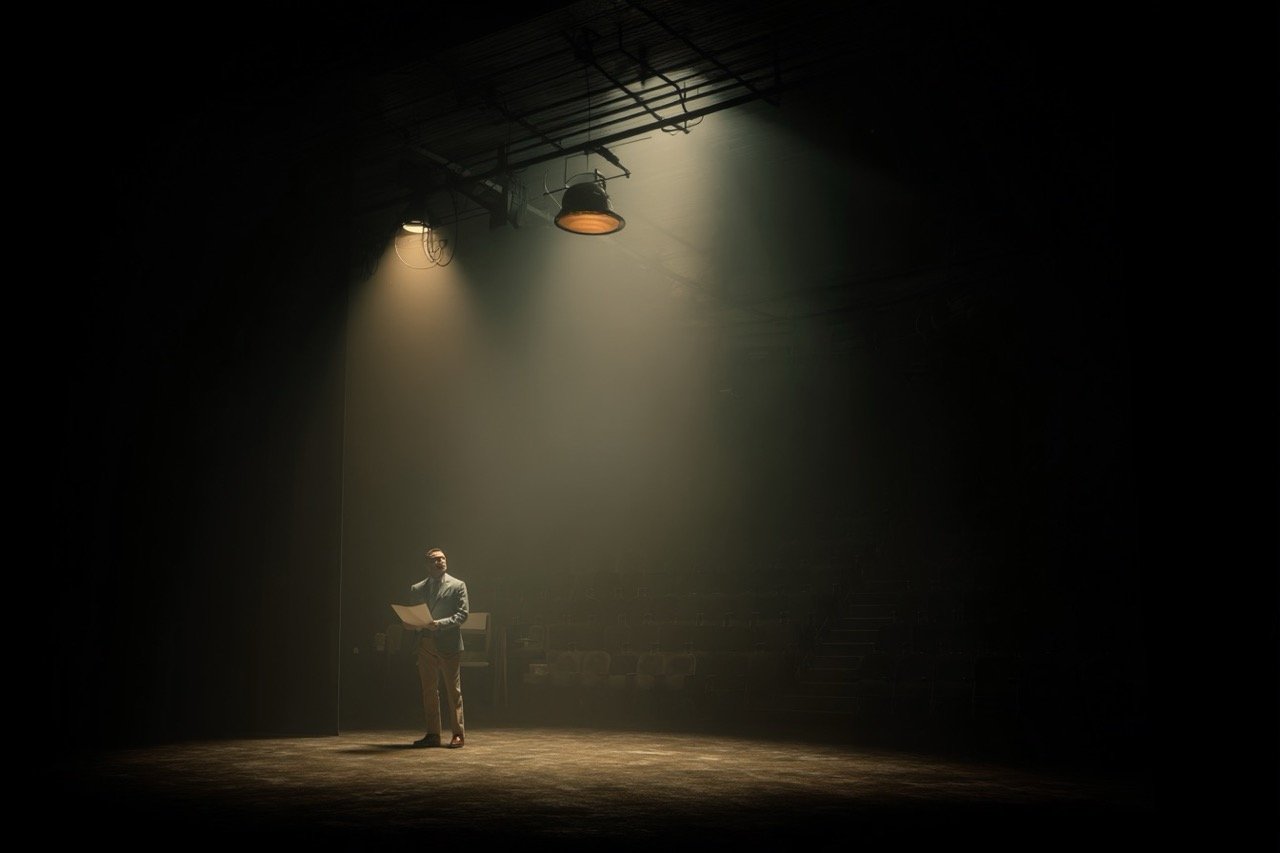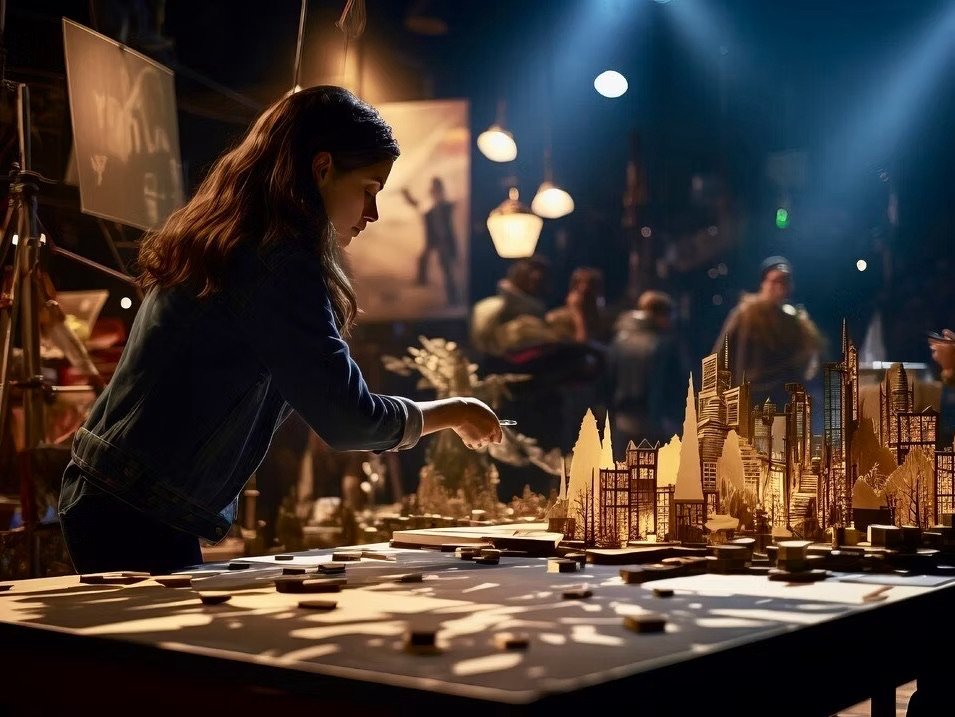Scenic Insights
Where visionary environments elevate storytelling across mediums. My designs translate creative concepts into tangible spatial experiences—each rendering, model, and technical draft showcasing precision craftsmanship that serves both theatrical productions and commercial environments with equal impact.
Framing the Martyr: Scenic Design as Memory Work in Romero
From the beginning, it was clear the scenic language needed to support a nonlinear dramaturgy. The play leaps between beach and cathedral, war zone and heaven. Characters slip between time and identity. Puppetry, projections, and movement required the space to transform without literalism.
“You’re Wasting My Time”: A Scenic Design Lesson That Still Sticks
I flew into Chicago the night before. I was a bit broke, but I had a plan. I printed all of my materials—resumes, images, labels. I packed a folded tablecloth and a new suit I had just bought on Amazon for $79 and opted for tennis shoes instead of dress shoes. They were more comfortable, and I never liked how formal footwear felt anyway.
The Art of Presenting Theatre Design: A Guide for Designers
Drawing from my years of experience as a professional designer, I've developed a structured approach to craft presentations that simplify the complex narrative of our design process and magnify the impact of our message. I am thrilled to share this methodology with you in this article.
Navigating the Scenic Design Process: A Comprehensive Guide
Conceptualization is about delving into the 'What' and the 'Why' of the Design. The research phase lays the foundation by addressing the 'What': identifying the show's needs, the timeline, the setting, and the message to be conveyed. As you transition into the conceptual phase, it's time to delve deeper to unearth the 'Why': the story's significance, the rationale behind the characters' presence, and so on. This phase encapsulates the essence of the narrative and the design vision.




